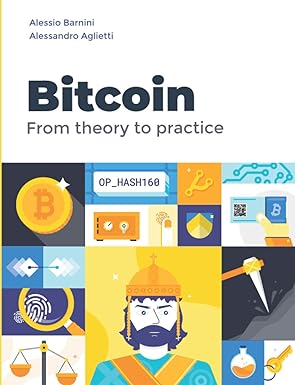Question
1) Suppose you start with $100 and buy stock for 50 when the exchange rate is 1 = $2. One year later, the stock rises
1) Suppose you start with $100 and buy stock for 50 when the exchange rate is 1 = $2. One year later, the stock rises to 60. You are happy with your 20 percent return on the stock, but when you sell the stock and exchange your 60 for dollars, you only get $45 since the pound has fallen to 1 = $0.75. This loss of value is an example of
A) political risk.
B) exchange rate risk.
C) weakness in the dollar.
D) market imperfections.
2) Suppose that Great Britain is a major export market for your firm, a U.S.-based MNC. If the British pound depreciates against the U.S. dollar,
A) to protect U.K. market share, your firm may have to cut the dollar price of your goods to keep the pound price the same.
B) your firm may be priced out of the U.K. market, to the extent that your dollar costs stay constant and your pound prices will rise, and to protect U.K. market share, your firm may have to cut the dollar price of your goods to keep the pound price the same.
C) your firm may be priced out of the U.K. market, to the extent that your dollar costs stay constant and your pound prices will rise.
D) your firm will be able to charge more in dollar terms while keeping pound prices stable.
3) Suppose Mexico is a major export market for your U.S.-based company and the Mexican peso depreciates drastically against the U.S. dollar, as it did in December 1994. This means that
A) your firm will be able to charge more in dollar terms while keeping peso prices stable.
B) your domestic competitors will enjoy a period of facing little price competition from Mexican imports.
C) your company's products can be priced out of the Mexican market, as the peso price of American imports will rise following the peso's fall.
D) none of the options
4) Underlying the theory of comparative advantage are assumptions regarding
A) that the factors of production (land, labor, capital, and entrepreneurial ability) are relatively mobile.
B) free trade between nations.
C) free trade between nations and that the factors of production (land, labor, capital, and entrepreneurial ability) are relatively immobile.
D) that the factors of production (land, labor, capital, and entrepreneurial ability) are relatively immobile.
5) The international monetary system went through several distinct stages of evolution. These stages are summarized, in alphabetic order, as follows:
(i) Bimetallism
(ii) Bretton Woods system
(iii) Classical gold standard
(iv) Flexible exchange rate regime
(v) Interwar period
The chronological order that they actually occurred is:
A) (i), (iii), (v), (ii), and (iv)
B) (v), (ii), (i), (iii), and (iv)
C) (vi), (i), (iii), (ii), and (v)
D) (iii), (i), (iv), (ii), and (v)
6) The monetary system of bimetallism is unstable. Due to the fluctuation of the commercial value of the metals,
A) the metal with a commercial value higher than the currency value tends to be used as money (Gresham's Law).
B) the metal with a commercial value lower than the currency value tends to be used as metal and is withdrawn from circulation as money (Gresham's Law).
C) the metal with a commercial value higher than the currency value tends to be used as metal and is withdrawn from circulation as money (Gresham's Law).
D) none of the options
7) Suppose that the pound is pegged to gold at 20 per ounce and the dollar is pegged to gold at $35 per ounce. This implies an exchange rate of $1.75 per pound. If the current market exchange rate is $1.60 per pound, how would you take advantage of this situation? Hint: assume that you have $350 available for investment.
A) Start with $350. Exchange the dollars for pounds at the current rate of $1.60 per pound. Buy gold with pounds at 20 per ounce. Convert the gold to dollars at $35 per ounce.
B) Start with $350. Buy 10 ounces of gold with dollars at $35 per ounce. Convert the gold to 200 at 20 per ounce. Exchange the 200 for dollars at the current rate of $1.80 per pound to get $360.
C) both of the options
D) none of the options
8) Prior to the 1870s, both gold and silver were used as international means of payment and the exchange rates among currencies were determined by either their gold or silver contents. Suppose that the dollar was pegged to gold at $30 per ounce, the French franc is pegged to gold at 90 francs per ounce and to silver at 9 francs per ounce of silver, and the German mark pegged to silver at 1 mark per ounce of silver. What would the exchange rate between the U.S. dollar and German mark be under this system?
A) 1 German mark = $1
B) 1 German mark = $0.50
C) 1 German mark = $2
D) 1 German mark = $3
9) The choice between the alternative exchange rate regimes is likely to involve a trade-off between
A) unemployment and inflation.
B) exchange rate uncertainty and national policy autonomy.
C) balance of payments autonomy and inflation.
D) national monetary policy autonomy and international economic integration.
10) The main cost of European monetary union is
A) lessened political integration.
B) the loss of national monetary and exchange rate policy independence.
C) increased exchange rate uncertainty.
D) none of the options
Step by Step Solution
There are 3 Steps involved in it
Step: 1

Get Instant Access to Expert-Tailored Solutions
See step-by-step solutions with expert insights and AI powered tools for academic success
Step: 2

Step: 3

Ace Your Homework with AI
Get the answers you need in no time with our AI-driven, step-by-step assistance
Get Started


